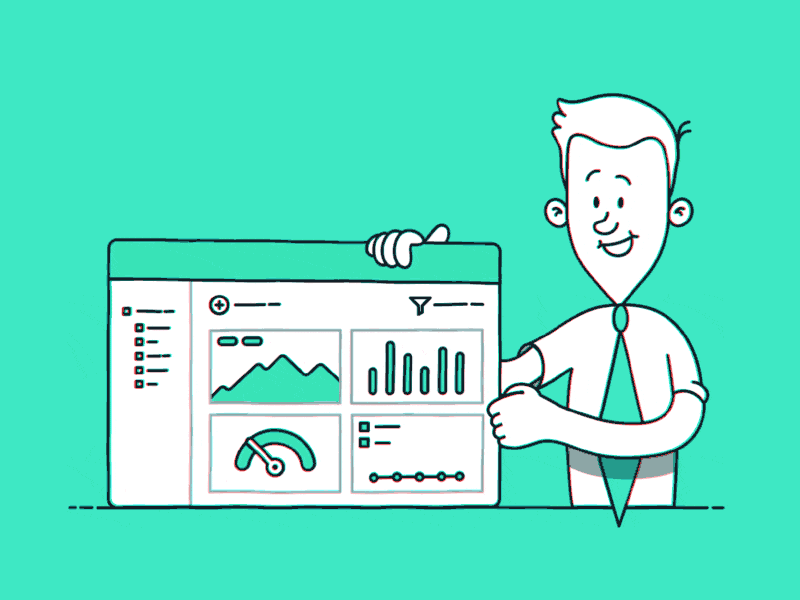Today, the need to preserve the confidence and security of people as well as uphold the integrity of enterprises, and organizations is critical. To effectively monitor such aspects of the behavior of the users, or to identify risks that possibly exist, a dashboard is most important. To facilitate the process, businesses can use special data visualization tools applied to build trust and safety dashboards. This article discusses how such dashboards could be created and the advantages of creating one.
What is a Trust and Safety Dashboard?
A trust and safety dashboard is an interface that can represent the data collected around different aspects of user’s behavior in an easy to understand manner. These dashboards can assist organizations in monitoring and detecting policy violations, identifying prohibited content impressions and volume, observe attempts to bypass policy.
For example, an e-commerce website might want to use these dashboards to identify frauds, people trying to scam the business and identify patterns that might give insights into the security aspects of transactions. The main challenge of creating a trust and safety dashboard is big data management – making the data easy to understand and represent in an actionable format.
The Role of Data Visualization in Trust and Safety
Business intelligence tools take data and bring it to life by creating a picture in form of a graph, chart or heatmap. This facilitates the identification of patterns, trends as well as outliers enabling decisions-making much faster. For trust and safety purposes, visualizations can:
-
Highlight Anomalies: Identify user’s irregularities or sharp increase in suspicious content emitted by users.
-
Track Metrics Over Time: Track changes in near-misses or accident rates, complaints or feedback from users, or breaches of compliance regulations.
-
Segment Data by Categories: Identify problems based on the location or the demographic or the type of different policy violations.
-
Facilitate Real-Time Monitoring: Real-time information can be analyzed proactively to counter any risk factors.
Steps to Develop a Custom Trust and Safety Dashboard
Define Objectives and Metrics
First of all, you should define the main objectives of using the selected dashboard. Are you looking for fraud detection, content moderation, or to ensure users’ data security? After objectives are defined, determine the metrics to track, whether it is flagged content, logins, or support tickets.
Gather and Prepare Data
Use activity logs, complaint records, or external APIs. Clean the data to make it precise and fit for analysis. Tools like Alteryx or ETL tool pipelines can help ease this process.
Select a Visualization Tool
Select a tool that will suit your needs and may not require technical skills. For non-technical teams, there is Power BI or Tableau where they can easily use the drag-and-drop features. For more customization, developers may go for Python libraries like Matplotlib or Plotly.
Design the Dashboard Layout
In design, it is always most important to ensure that the final product is clear and easy to use. Similar attributes should be grouped in one section, the use of appropriate color schemes, and the most important information should be easily and pointed out properly. Stay away from gaudiness, and hold simplicity.
Implement Real-Time Data Updates
For a dynamic environment, it is necessary to incorporate tools for live data feed so that the changes can be reflected in the dashboard. For this, there are technologies such as Apache Kafka or WebSockets.
Test and Iterate
Notify stakeholders about the created dashboard and collect feedback. Analyze the feedback to identify patterns regarding the usefulness of the visualizations, change metrics, or even the overall topology.
Best Practices for Effective Dashboards
- User-Centric Design: Ensure that the end-user view of the dashboard is most appropriate for their needs. For instance, a compliance office will require different metrics, and a cybersecurity analyst will have different needs.
- Prioritize Key Metrics: Providing users with too much information might not always be the best idea. Prioritize and draw attention to the dimensions which are most relevant for the analysis.
- Interactive Features: Users should be able to zoom into a particular analysis or even filter the data by different dimensions as needed.
- Security Considerations: Due to their nature, the trust and safety dashboards might involve working with delicate information, there should always be strong measures in place for controlling access, and encrypting Personal Identifiable Information(PII).
Conclusion
Building a trust and safety dashboard is a crucial process, especially when aiming to protect an organization’s digital integrity. With data visualization tools, businesses can build solutions for their platforms and help teams improve by giving them meaningful information. For any entrepreneur, whether they are new to the market or have been in the market for some time, such an investment is an investment trust, safety, and a positive future.












